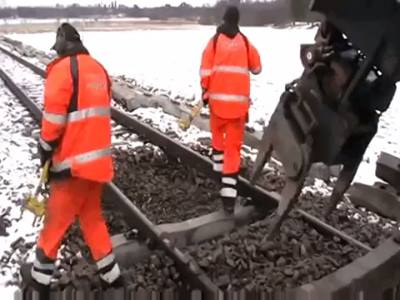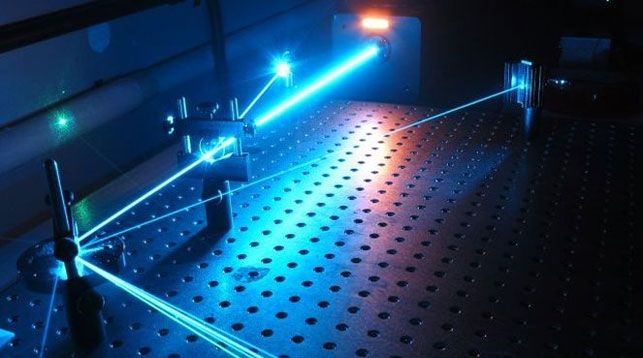Page 10368
Sep 26, 2016
Plans for Belarusian-Russian laser technology R&D center
Posted by Karen Hurst in categories: food, materials
The new Belarusian-Russian R&D center for laser technologies is supposed to open in Minsk. The center will take care of the most important and new practical applications of laser technologies, said Sergei Bagayev. The scope of research will vary from agricultural applications to using lasers for the advanced processing of oil products to get modern materials.
Sep 26, 2016
China strengthens scientific cooperation with countries along Belt and Road
Posted by Karen Hurst in category: futurism
Chinese President Xi Jinping delivers a speech during a symposium on the Belt and Road Initiati.
Sep 26, 2016
Australian technology runs world’s largest single-dish radio telescope in China
Posted by Karen Hurst in category: space
Sep 26, 2016
China probes North Korea bank suspected of nuclear link — South Korea paper
Posted by Karen Hurst in categories: finance, law enforcement
SEOUL: China is investigating executives of a North Korean bank believed to finance the illicit procurement of arms and materials related to the isolated country’s banned nuclear programme, South Korea’s JoongAng Daily reported on Monday.
China and the United States have agreed to step up cooperation in the U.N. Security Council and in law enforcement channels after North Korea’s fifth nuclear test on Sept. 9, the White House said last week.
While China is North Korea’s sole major ally, it disapproves of its nuclear and missile programmes.
Continue reading “China probes North Korea bank suspected of nuclear link — South Korea paper” »
Sep 26, 2016
Lawrence Krauss Versus Freeman Dyson on Gravitons
Posted by Karen Hurst in categories: alien life, engineering, genetics, particle physics, quantum physics, robotics/AI, space travel
Yesterday, in the New York Review of Books, Freeman Dyson analyzed a trio of recent books on humanity’s future in the larger cosmos. They were How to Make a Spaceship: A Band of Renegades, an Epic Space Race, and the Birth of Private Spaceflight; Beyond Earth: Our Path to a New Home in the Planets; and All These Worlds Are Yours: The Scientific Search for Alien Life.
Dyson is “a brilliant physicist and contrarian,” as the theoretical astrophysicist Lawrence Krauss recently told Nautilus. So I was waiting, as I read his review, to come across his profound and provocative pronouncement about these books, and it came soon enough: “None of them looks at space as a transforming force in the destiny of our species,” he writes. The books are limited in scope by looking at the future of space as a problem of engineering. Dyson has a grander vision. Future humans can seed remote environments with genetic instructions for countless new species. “The purpose is no longer to explore space with unmanned or manned missions, but to expand the domain of life from one small planet to the universe.”
Dyson can be just as final in his opinions on the destiny of scientific investigation. According to Krauss, Dyson once told him, “There’s no way we’re ever going to measure gravitons”—the supposed quantum particles underlying gravitational forces—“because there’s no terrestrial experiment that could ever measure a single graviton.” Dyson told Krauss that, in order to measure one, “you’d have to make the experiment so massive that it would actually collapse to form a black hole before you could make the measurement.” So, Dyson concluded, “There’s no way that we’ll know whether gravity is a quantum theory.”
Continue reading “Lawrence Krauss Versus Freeman Dyson on Gravitons” »
Sep 26, 2016
Stopped light means go for quantum computers (eventually)
Posted by Karen Hurst in categories: computing, quantum physics
‘Stationary light’ could lead to quantum logic gates – building blocks for quantum computers. Cathal O’Connell reports.
Sep 26, 2016
Wonders of Creation: Scientists Use Quantum Mechanics to Teleport Particle 4 Miles
Posted by Karen Hurst in categories: computing, particle physics, quantum physics
Scientists at the University of Calgary successfully teleported a particle nearly four miles away in a breakthrough experiment that could revolutionize the way computers function.
Researchers used the entanglement property of quantum mechanics, known as “spooky action at a distance,” to teleport a particle. It’s a scientific property not even the renowned Albert Einstein could come to terms with it.
“Being entangled means that the two photons that form an entangled pair have properties that are linked regardless of how far the two are separated,” Dr. Wolfgang Tittel, a physics professor at the University of Calgary who was involved in the research, said in a press statement. “When one of the photons was sent over to City Hall, it remained entangled with the photon that stayed at the University of Calgary. What happened is the instantaneous and disembodied transfer of the photon’s quantum state onto the remaining photon of the entangled pair, which is the one that remained six kilometres [slightly less than 4 miles] away at the university.”
Sep 26, 2016
Terrorist in the machine: U.S. DOJ fears IoT for security
Posted by Karen Hurst in categories: government, internet, security, terrorism

The huge wave of Internet of Things (IoT) enabled devices has the U.S. government worried that the technology harbors lurking security threats.
According to a Defense One article, the U.S. Department of Justice has joined other agencies in evaluating IoT technology for national security risks.
Continue reading “Terrorist in the machine: U.S. DOJ fears IoT for security” »
Sep 26, 2016
Will driving your own car become the socially unacceptable public health risk smoking is today?
Posted by Karen Hurst in categories: health, robotics/AI, transportation
Improved autonomous vehicle technology could reduce the tens of thousands of annual U.S. deaths due to human error behind the wheel. Are driverless cars the next big public health intervention?

















